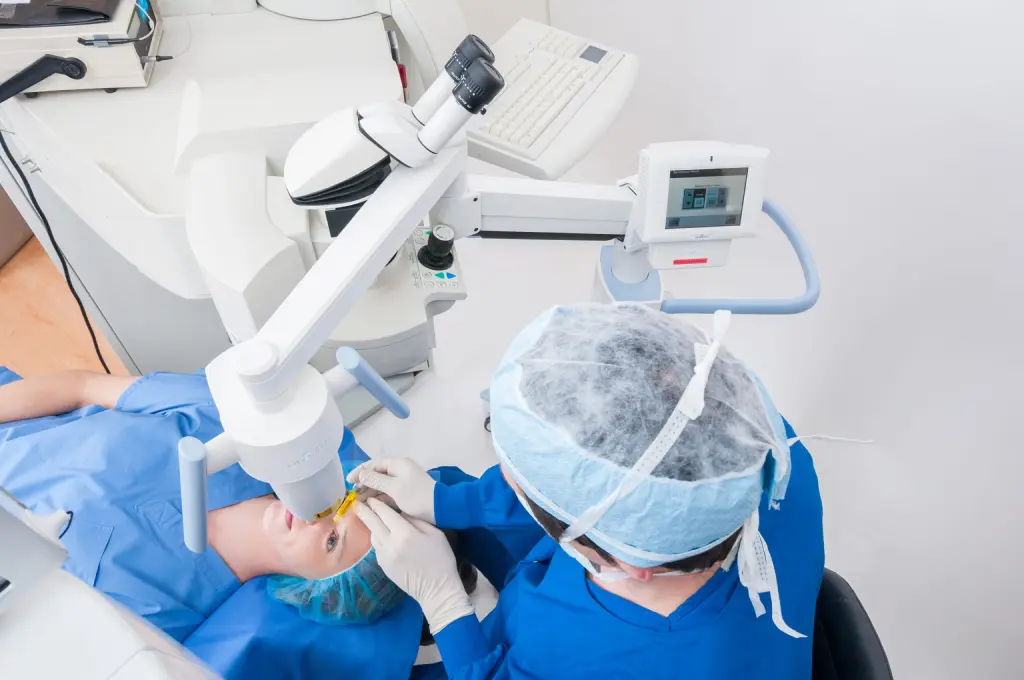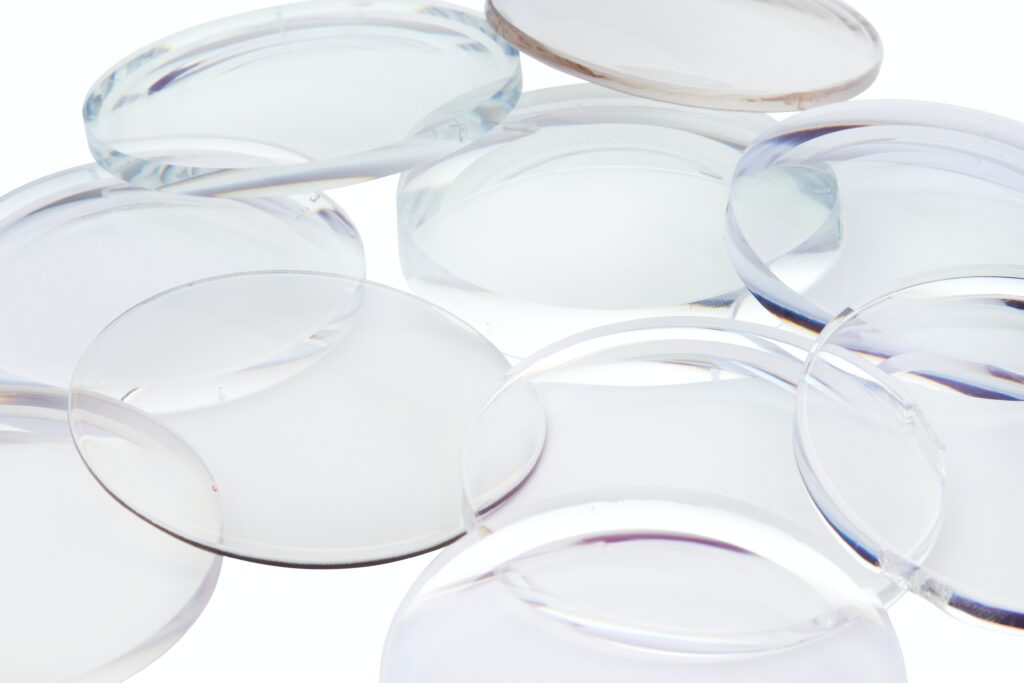Keratoconus 101: Treatment Options and Post-Treatment Care

Undergoing any medical procedure or treatment can be intimidating when you don’t know what to expect. Doing research on the treatment options that were recommended by your doctor ahead of time often helps to ease concerns. If you’re reading about keratoconus treatment options and post-treatment care, you’re likely already familiar with this progressive eye condition. If not, we’ve got you covered! Keratoconus, often referred to as KC, is an eye condition in which the cornea weakens and thins over time, causing the development of a cone-like bulge and optical irregularity of the cornea. Keratoconus symptoms can include slight blurring of vision, distortion of vision, and increased sensitivity to light.
“Keratoconus is a progressive eye disease that typically affects both eyes and causes bulging to the front surface of the eye, called the cornea. Diagnosing keratoconus at an early stage is crucial to prevent permanent vision loss, slow the progression of the disease, and ensure the best visual outcome for each patient. Many options remain open to patients if progression is caught early.”
Dr. John Berdahl of Vance Thompson Vision
If untreated, keratoconus may result in significant vision loss and can lead to a corneal transplant in severe cases. However, there are various FDA-approved treatment options available that work to treat the symptoms caused by the thinning and bulging of the cornea.
In our first Keratoconus 101 blog, we explored progressive keratoconus causes, symptoms, and demographics. Now that you know the basics of the condition, we’re providing an overview of available treatment options, including iLink® FDA-approved cross-linking, and post-treatment care and maintenance. Keep reading to learn more.
Treatment Options
After receiving a keratoconus diagnosis, the most important next step is to discuss with your doctor which treatment option is right for you. Luckily, there are numerous FDA-approved treatments available. Continue reading below to learn more about some of the keratoconus treatments that you may be considering:
Corneal Cross-Linking
Cross-linking is a minimally invasive outpatient procedure for the treatment of progressive keratoconus. It is the only keratoconus treatment that can slow or halt the progression of the disease. iLink® epi-off cross-linking, the only FDA-approved cross-linking procedure, combines the use of prescription eye drops, Photrexa® Viscous (riboflavin 5’-phosphate in 20% dextran ophthalmic solution), Photrexa® (riboflavin 5’-phosphate ophthalmic solution), and ultraviolet A (UVA) light from the KXL® system to create new collagen cross-links and leads to the stiffening of the cornea. The goal of the procedure is to stiffen the cornea to slow or prevent further progression of the condition and preserve your vision.
iLink® is widely covered by insurance with over 95% of the commercially insured population having access to this potentially sight-protecting treatment. However, it is important to know that not all cross-linking procedures are FDA-approved. If you are considering cross-linking as a treatment option, make sure to confirm with your doctor that the procedure he or she performs is FDA-approved. You can find a list of doctors who perform the iLink® procedure here.

Eyeglasses or Soft Contacts
Some mild or early cases of keratoconus can be managed through traditional non-specialty eyeglasses or contact lenses. Typically soft astigmatism correcting contact lenses will be used. Moderate and somewhat severe cases can be treated with specialty soft lenses that have a thick central optic zone to mask the corneal irregularity and a thin periphery for comfort. These lenses are limited in terms of whether they can provide adequate vision correction for the individual, especially as the condition progresses.
Rigid Gas Permeable Contact Lenses (RGPs)
Rigid Gas Permeable (RGP) lenses are another type of contact lens that people with keratoconus may use. These lenses are made of durable plastic that can transmit oxygen. Scleral contact lenses are a specific type of gas permeable lenses that are larger in diameter and designed to cover the entire cornea plus a portion of the white of the eye. Hybrid contacts, on the other hand, are RGPs surrounded by a soft lens lining or skirt.
Intacs
Intacs are thin plastic, semi-circular rings, which are surgically inserted under the surface of the cornea. When inserted into the keratoconic cornea, they flatten the cornea, changing its shape. The placement of Intacs may reduce corneal irregularities caused by keratoconus.
Corneal Transplant Surgery
For the most severe cases of keratoconus, a corneal transplant may be the only treatment option available if the cornea becomes dangerously thin and/or sufficient vision can no longer be achieved by contact lenses. During corneal transplant surgery, the part of the cornea affected by keratoconus is removed and replaced with a donor cornea. While the surgical transplantation of a new cornea will resolve the basic problem of corneal surface irregularity, eyeglasses or contact lenses are usually needed after the surgery for vision correction.
Post-Treatment Care and Maintenance
Like with most treatments, there are care and maintenance guidelines to follow to ensure a seamless recovery. So whether you’re planning to use contact lenses to help improve your vision or you’ve just scheduled your iLink® FDA-approved cross-linking procedure to halt or slow the condition’s progression, it’s important to understand the proper care and maintenance. The more you know about the specific treatment that you will be receiving, the more prepared and at ease you will feel.
It’s important to ask your doctor what you can expect from each treatment and how to take care of yourself afterward. To help provide a bit more information, we’re sharing some insights below.
Corneal Cross-Linking
After undergoing iLink® FDA-approved cross-linking, you can expect the following:
- Your doctor will likely place a bandage contact lens on the surface of the eye after treatment to protect the newly treated area. This contact lens will be removed at your post-surgical visit. If your bandage contact lens falls out or becomes dislodged, you should not replace it and contact your physician immediately.
- During the first five days after the procedure, you should not rub your eyes.
- Discuss with your doctor when you can return to your normal activities. Typically, people who have undergone cross-linking are able to get back to their normal daily activities within 1-2 weeks of the procedure.
- You will likely be allowed to use your contact lenses about 1 month after the procedure.
- You may need glasses or contacts post-procedure. Make sure to discuss with your doctor what he or she expects your treatment to be following the procedure.
- Some common side effects may include a sensitivity to light, a foreign body sensation, and discomfort in the treated eye. Try wearing sunglasses to help with light sensitivity.
- The goal of the procedure is to preserve vision. Cross-linking is not intended to eliminate or reduce dependence on refractive correction. You will likely need to be evaluated for new glasses or contact lenses 6 months after your procedure, once your vision has stabilized.
Contact Lenses
If you’re getting soft or RGP contact lenses to manage your keratoconus, it’s important that you remember to:
- Clean your hands with soap and water before handling your lenses
- Frequently clean and disinfect your contacts
- Keep your eye exam appointments
- Call your doctor if you notice any signs of irritation, infection, or changes in vision.

Intacs
After an Intacs procedure, you may feel a foreign body sensation (like something is in your eye), light sensitivity, and tearing as the incision heals. To help control the pain, try taking Tylenol or a similar over-the-counter painkiller.
Corneal Transplant Surgery
After corneal transplant surgery, your ophthalmologist will likely want to see you the day after to check your eyes. During this time, your stitches may be removed, depending on how quickly you heal, the health of your eye, and the type of stitches used. As you recover from surgery, it’s important to adhere to the following:
- Make sure to use eye drops as prescribed
- Do not rub or put pressure on your eye after surgery
- If necessary, take over-the-counter pain medicine as needed. Make sure to clarify with your doctor which medication is safe for you to take
- Wear an eye shield or eyeglasses to protect your eyes from bright lighting or glare
- Your ophthalmologist may also recommend that you lie on your back after surgery, as this helps the new donor tissue stay in place. Make sure to check with your doctor before doing this.
Taking the Next Step
Hopefully, after gaining more knowledge of keratoconus treatment options and post-treatment care and maintenance, you’re feeling more comfortable taking the next step in your KC Journey! If you still have questions about which treatment option to pursue, don’t hesitate to contact your doctor to further discuss which path is right for you.
Visit our website to learn more or to find a keratoconus specialist near you. Don’t forget to follow us on Facebook, Twitter, and Instagram for more information and support.